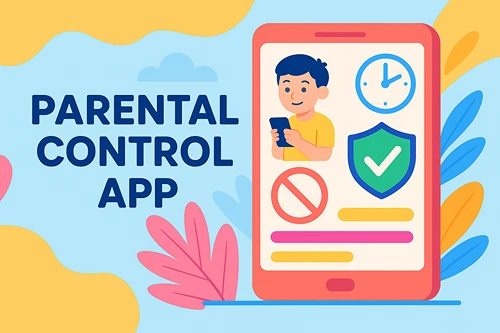Teaching Your Kids What Not to Share Online
The internet can enrich a child’s life in so many wonderful ways. It’s a tool that helps them stay connected with loved ones or expand their social circle. It can teach skills or life lessons and set a child almost anywhere in the world on a life path thought unimaginable a mere generation ago.
For all its benefits, the internet is also full of risks. Innocent and eager to expand their horizons, children are the easiest to take advantage of and obtain sensitive data from. In this guide, we cover how to approach online sharing and prepare your kids to be responsible, safe netizens.
What should you encourage them to share?
Merely enforcing cautious behavior and scaring kids with the consequences isn’t helpful and can potentially cause older ones to grow rebellious. Instead, adopt a measured approach that steers them to use the internet responsibly.
For example, you can encourage little ones to talk with vetted friends they know in real life or discuss their interests and opinions in kid-appropriate spaces. Let creative kids share their drawings, photos, etc. with others, provided these don’t expose anyone’s identity or specific information about the child, like the school they attend.
What should not be shared?
Make your children aware that sharing some information is harmful and can have long-lasting consequences. These conversations can be awkward if forced, so try to weave bits of advice in every so often during more casual talks.
Emphasize that no one except people you both know and trust has any business knowing any identifiable information about them. That includes:
- Their real name and address
- The school they go to
- Any information related to savings or joint checking accounts, if they’re older
- Online account information & passwords
- Whereabouts & travel plans
There are limits even when communicating with trusted individuals. Even if you delete something later, copies, screenshots, or cached versions might still exist somewhere. Basically, the internet doesn’t easily forget — and your kids should know that.
Helping Them Navigate the Internet
Younger kids who are dipping their toes into the digital space are the easiest to direct. You can put together a list of age-appropriate websites that will provide lots of fun and activities while helping them grasp the basics of navigation and device use.
But as kids grow, so does their curiosity and individuality. They might start seeing guardrails as obstacles, while your well-intentioned monitoring methods might be seen as an invasion of privacy. Of course, you shouldn’t give parental control up completely. Still, you will want to start equipping your child with the wisdom and tools to stay safe.
Telling good websites apart from harmful ones
Sooner or later, kids realize there’s more to the internet than Roblox and social media. The good news is that you have a major say in what websites and how they should pursue next. Teaching them what to look for and what to avoid will inform their lifelong behavior and corresponding risk.
So, how do you check if a website is safe? While it doesn’t strictly need to be age-appropriate, a website should be suited to a general audience. You can consult the top ten lists and read user reviews to narrow the search down.
Visit prospective websites together with your kids and point out any red flags you encounter. These include annoying and sketchy pop-ups, sign-up forms that ask for details other than a username and password, and unrealistic or misleading claims.
Ingraining positive security habits
Limiting data exposure might be essential, but it’s just one out of several positive habits kids should be building.
For example, as they get older, children will start creating personal accounts for various websites and games. Finding the best password manager available and teaching them how to use it from the start will eliminate all the potential trouble weak or reused passwords can cause later.
Teach them to always look for a lock next to a website’s address since that means it encrypts user data and makes interactions much more secure. If your child uses social media, go over the privacy settings together and make sure only people they’re friends with can view their profile.
Teach them not to engage with unsolicited messages or click on suspicious links. Make them aware of various types of online scams, especially those targeting minors.
Lastly, encourage tech savviness by helping kids lock their devices down. Have them set up biometrics on phones and passwords for their laptop or PC. Show them how to enable automatic updates and scan for viruses to keep their devices and data safe.
Conclusion
Current parents have grown up during a time when distinctions between one’s physical and digital life were clear. The line between the two is much blurrier for kids today, making timely and appropriate guidance all the more impactful.






